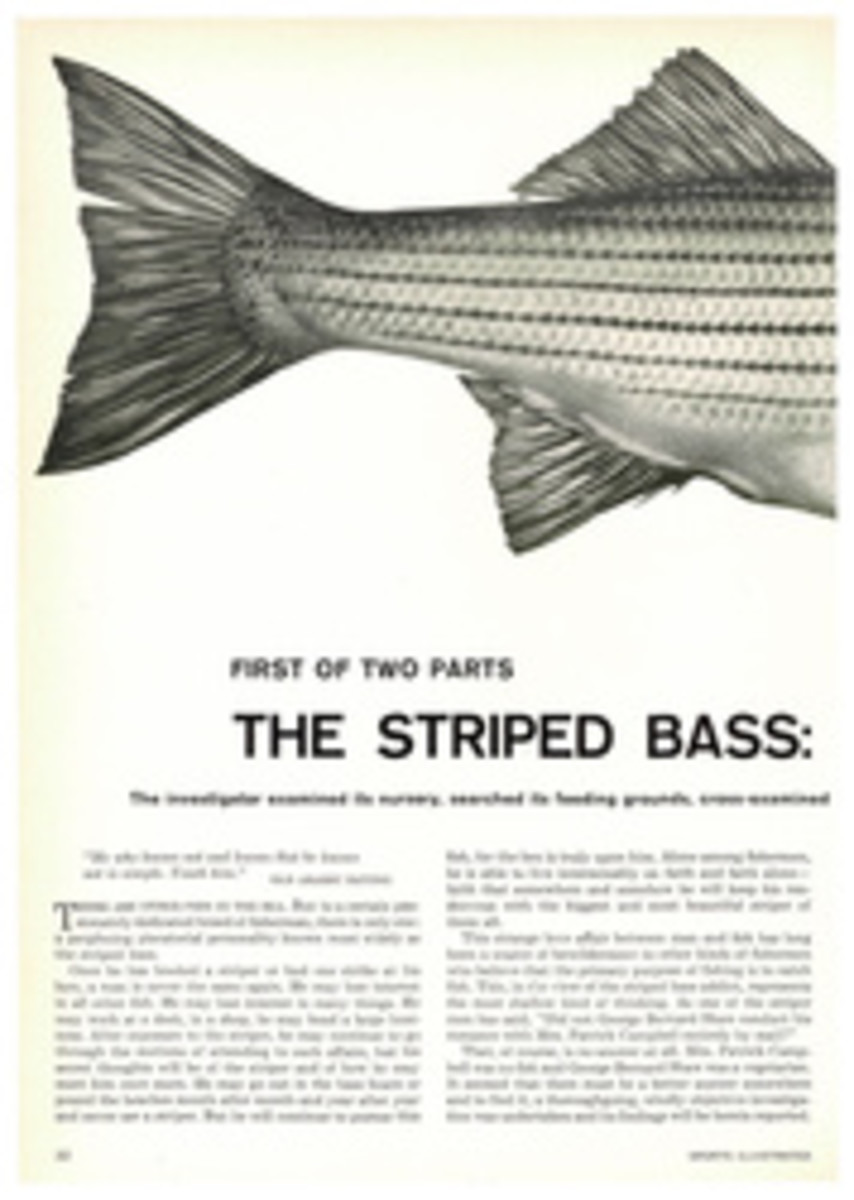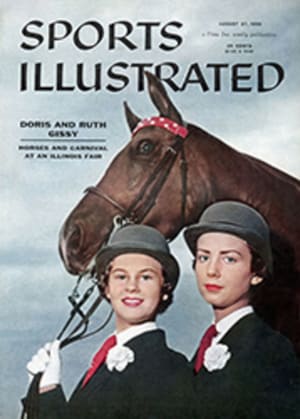
BUZZARDS BAY BERTH
In an Olympic sailing trial with a berth on the American team at stake, even a normal sail race can become high excitement. But last week's 5.5-meter trials on Buzzards Bay off Marion, Mass. ended in drama that had hardened sailing buffs scrambling for binoculars.
Every hull on Buzzards Bay represented from $5,000 to $15,000 of the owner's money. Thirty-two feet or so in length, the three-man 5.5-meter sloop is the biggest boat in the Olympics (SI, Aug. 13), and it was fitting that the biggest money and the biggest effort went into the competition. Within a remarkably short space of 10 months the American 5.5 fleet grew from one lone hull owned by 1952 Olympic 5.5 champion Dr. Britton Chance of Philadelphia to 13 hulls hailing from places like Marblehead, Long Island Sound, Kemath, Texas and Wilmington, Calif.
By the time various hulls had been shipped, tank-tested or given several sets of racing sails, the total out-of-pocket of owners ran over $100,000.
Nine of the boats were purchased abroad and the other four were designed by Americans, a fact which pitted U.S. architects against the best European designers.
Both Bill Luders and Ray Hunt, top-notch American designers, were standing off the racing course in cruising boats when the 13 slick, easy-riding hulls went shooting across the starting line for the first time. Luders' contribution comprised two-thirds of a three-boat contingent from the Texas Corinthian Yacht Club, and the Lone Star skippers struck fear into the hearts of the Yankees in the first race by finishing 1-3-4. Strains of The Eyes of Texas Are Upon You rose from the power boats which carried some two dozen rooters who had come all the way north for the trials. Bob Mosbacher, skipper of the winning Carina, hoisted the Texas ensign and displayed a big grin. He was notified shortly by note that the race committee recognized only the national emblem.
Texas and tomfoolery were forgotten the next day, however, when Hunt's design, the Quixotic, sailed by her three young owners out of Marblehead, took the fleet by a tremendous seven minutes and then proceeded to win the next two races in a row.
"When does this thing stop?" a rival muttered. "I'm telling you, the rest of us are worried." They had reason to be. The Quixotic, with three races to go, was more than 1,300 points ahead of her most dangerous competitor, the Swedish-built Rush IV, owned by Vic Sheronas of Philadelphia and skippered by 23-year-old Andy Schoettle, a towheaded Barnegat Bay Comet champion.
Up to this point the Quixotic story read like an American ballad. The boys aboard her were Don McNamara, national 210 champion; Ted Hood, at 28 one of the country's leading sailmakers; and John Collins, Boston sailing writer. The Quixotic had been built at Marblehead. Her planks were fitted by craftsmen using tools that had run along the hulls of New Bedford whalers. Her owners launched her amid a blaze of flags on July 4.
Even in the light airs of the fifth race, in which the Quixotic was at a disadvantage, the gods smiled on her. The boats lay becalmed, with Rush IV among the leaders and Quixotic in the ruck a mile behind, when a new breeze sprang up and carried Quixotic past Rush and into No. 4 place. It looked like the party was all over.
Then the gods deserted ship.
In the sixth race, sitting well up in fourth place, Hood tried to squeeze Quixotic around a marker ahead of oncoming Little Flica and tacked close off Flica's bow. Skipper Pierre du Pont veered off and hoisted a red protest flag. The race committee later decided against Quixotic, and her score for the race became zero.
Aboard Rush IV, Schoettle, a sailor of unabashed cheerfulness who had been practicing since last fall—longer than any skipper except Dr. Chance—maneuvered home in fourth place. In Rush IV he had a top European boat, a fourth in the 1955 world championship Gold Cup. In Sheronas and, alternately, John Bryant and Bob Stinson, he had a fast, well-organized crew. Schoettle made the most of all his advantages.
Quixotic should have had no trouble taking it in the last race. All she needed was ninth place, even if Rush won. The race started in a nice westerly breeze, and Quixotic raced from 10th place to fourth on a single reach. The Marble-headers were practically in Melbourne.
THEN IT HAPPENED
Suddenly Quixotic's mainsail sagged, fluttered wildly and dropped into the boat. The shackle which held the mainsail to the halyard had opened. Mc-Namara, 200 pounds and a former Harvard back, sprang to the wire stays and swarmed up hand over hand, his legs hugging the swaying, bucking 40-foot mast until the stays ended, some 10 feet below the top. McNamara stood on the quivering stays with bare feet and reached for the shackle with hands that were cut and bleeding. He was short by three feet. He tried desperately to climb the slick aluminum. It couldn't be done. Then he went down the mast, got a boat hook, came back up and, until the rest of the fleet had gone a mile ahead, he tried to hook the shackle down. It wouldn't come.
"I sat there, knowing I was one yard from Melbourne," he said later, "and I couldn't reach it."
It was a stunned crew that hoisted the mainsail in makeshift fashion on the spinnaker halyard and trailed the fleet around the course. Their only hope was that Rush IV would fail to finish first.
Schoettle had scented victory, however. He made an inspired leeward run that brought him from fourth to first, a position he grimly held against repeated challenges by the No. 2 and No. 3 boats. When Rush IV crossed the line, Quixotic became just another boat that didn't make it.
It takes none of the sheen from Rush IV's fine performance or the fact that she might do very well at Melbourne to say that most sailors would have preferred to be represented by an American-designed boat. It may still be, however, that Quixotic will carry U.S. colors in the future. The Gold Cup will be sailed in 5.5-meter boats next year in Norway and will give Quixotic a chance to prove that an American-designed 5.5-meter can be the world's fastest. Right now, it's up to Andy Schoettle and his teammates to prove that American sailors can be the world's best.
PHOTO
"RUSH IV," OLYMPIC TRIAL WINNER, RUNS DOWNWIND WITH ANDY SCHOETTLE AT THE HELM

